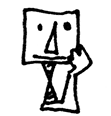
At 1438m above sea level, Grażyna Kulczyk has fulfilled her dream of an art museum in an alpine village. The village is tiny, the ambitions are great, and the museum is extraordinary. Przekrój paid it a visit on the eve of the opening.
Switzerland is not quite my cup of tea. My feet have barely touched its well-developed, clean and expensive ground, and I already feel a bit like an illegal immigrant. It seems that this feeling is not only growing in my heart, but also shows on my face—as soon as I arrive in Zürich, I am selected for a random search from the crowd of passengers. The customs officer hurriedly rummages through my backpack and simultaneously interrogates me, chatting away as if we are mates. He takes a look at my warm clothes, and asks whether it is already cold and wintery in Poland. I respond that the real winter awaits me at my destination: Susch.
“Susch?” he lifts his eyebrow. “That village in Engadine, where that Polish lady is opening a museum of modern art?”
And so, I wonder, can we still say that the idea of “that Polish lady,” Grażyna Kulczyk, to build a museum in a tiny alpine village is a utopian operation, when even customs officers at the airport are already talking about it? I just don’t know whether it says more about the Polish collector’s endeavour, or about Switzerland and its customs officers.
* * *
The road from Zürich to Susch charts the distance between zero degrees sludge and double-digit frost glistening in the full sun. To say that Grażyna Kulczyk is opening a museum at the end of the world is an exaggeration—and yet it isn’t. Susch really does lie at the end of the world, or at least the end of the Swiss world, at the easternmost edge of the country, just a stone’s throw away from Italy and Liechtenstein, in the valley of Engadine in the canton of Grisons. Grisons? Engadine? These are names that seem to belong in some new fantasy saga. And indeed, the closer one gets to Susch, the more the landscape resembles the heroic plein-airs straight out of Lord of the Rings. Until Kulczyk officially opens her museum on January 2, 2019, the national nature reserve








